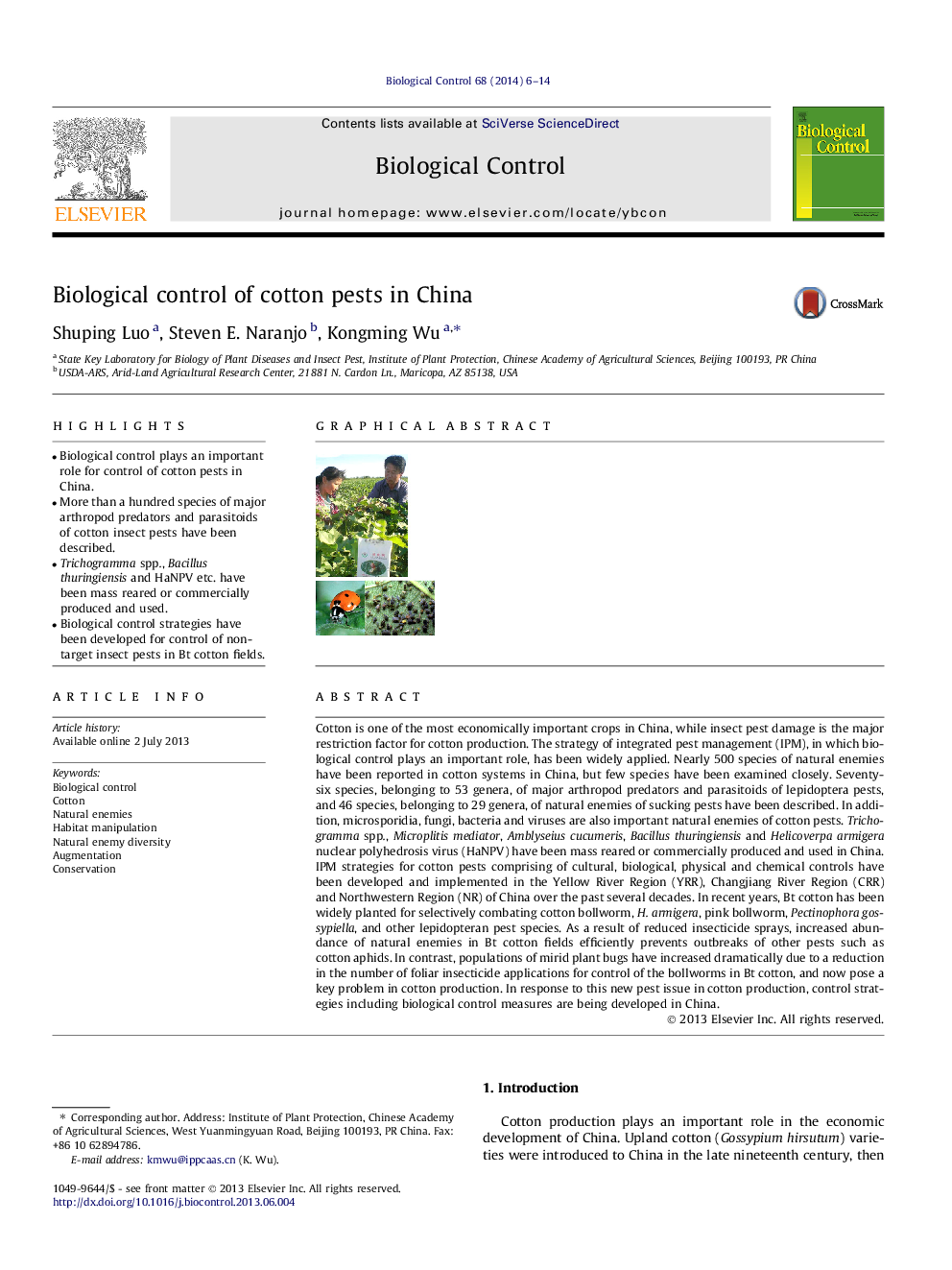| Article ID | Journal | Published Year | Pages | File Type |
|---|---|---|---|---|
| 4503957 | Biological Control | 2014 | 9 Pages |
•Biological control plays an important role for control of cotton pests in China.•More than a hundred species of major arthropod predators and parasitoids of cotton insect pests have been described.•Trichogramma spp., Bacillus thuringiensis and HaNPV etc. have been mass reared or commercially produced and used.•Biological control strategies have been developed for control of non-target insect pests in Bt cotton fields.
Cotton is one of the most economically important crops in China, while insect pest damage is the major restriction factor for cotton production. The strategy of integrated pest management (IPM), in which biological control plays an important role, has been widely applied. Nearly 500 species of natural enemies have been reported in cotton systems in China, but few species have been examined closely. Seventy-six species, belonging to 53 genera, of major arthropod predators and parasitoids of lepidoptera pests, and 46 species, belonging to 29 genera, of natural enemies of sucking pests have been described. In addition, microsporidia, fungi, bacteria and viruses are also important natural enemies of cotton pests. Trichogramma spp., Microplitis mediator, Amblyseius cucumeris, Bacillus thuringiensis and Helicoverpa armigera nuclear polyhedrosis virus (HaNPV) have been mass reared or commercially produced and used in China. IPM strategies for cotton pests comprising of cultural, biological, physical and chemical controls have been developed and implemented in the Yellow River Region (YRR), Changjiang River Region (CRR) and Northwestern Region (NR) of China over the past several decades. In recent years, Bt cotton has been widely planted for selectively combating cotton bollworm, H. armigera, pink bollworm, Pectinophora gossypiella, and other lepidopteran pest species. As a result of reduced insecticide sprays, increased abundance of natural enemies in Bt cotton fields efficiently prevents outbreaks of other pests such as cotton aphids. In contrast, populations of mirid plant bugs have increased dramatically due to a reduction in the number of foliar insecticide applications for control of the bollworms in Bt cotton, and now pose a key problem in cotton production. In response to this new pest issue in cotton production, control strategies including biological control measures are being developed in China.
Graphical abstractTrichogramma spp., Microplitis mediator, Amblyseius cucumeris etc, Bacillus thuringiensis and Helicoverpa armigera nuclear polyhedrosis virus (HaNPV) have been mass reared or commercially produced and used in China for control of cotton arthropod pests.Figure optionsDownload full-size imageDownload as PowerPoint slide
